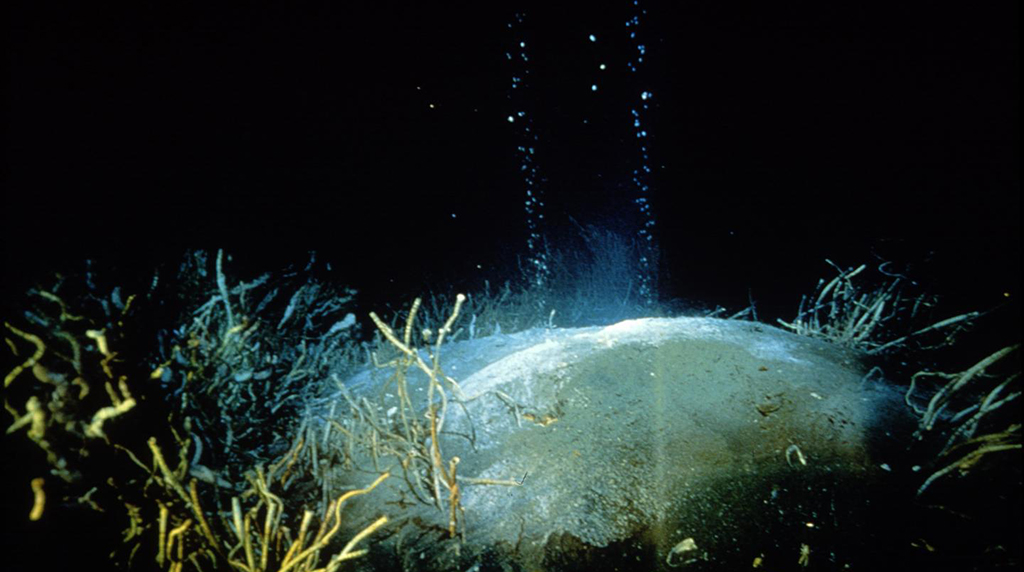September 08, 2020
The entire review paper is available online here - below is a summary, read about the amazing geology and biogeochemistry of hydrocarbon seeps.
Hydrocarbon seeps, deep sea extreme environments where deeply sourced fluids discharge at the seabed, occur along continental margins across the globe. Energy-rich reduced substrates, namely hydrocarbons, support accelerated biogeochemical dynamics, creating unique geobiological habitats. Subseafloor geology dictates the surficial expression of seeps, generating hydrocarbon (gas and/or oil) seeps, brine seeps, and mud volcanoes. Biogeochemical processes across the redox spectrum are amplified at hydrocarbon seeps due to the abundance and diversity of reductant; anaerobic metabolism dominates within the sediment column since oxygen is consumed rapidly near the sediment surface. Microbial activity is constrained by electron acceptor availability, with rapid recycling required to support observed rates of hydrocarbon consumption. Geobiologic structures, from gas hydrate to solid asphalt to authigenic minerals, form as a result of hydrocarbon and associated fluid discharge. Animal-microbial associations and symbioses thrive at hydrocarbon seeps, generating diverse and dense deep sea oases that provide nutrition to mobile predators.
|
▪ |
Hydrocarbon seeps are abundant deep sea oases that support immense biodiversity and where specialization and adaptation create extraordinary lifestyles. |
||||
|
▪ |
Subseafloor geology shapes and defines the geochemical nature of fluid seepage and regulates the flux regime, which dictate the surface expression. |
||||
|
▪ |
High rates of anaerobic oxidation of methane require coupling to multiple processes and promote diversity in the anaerobic methanotroph microbial community. |
||||
|
▪ |
The recent discovery of novel phyla possessing hydrocarbon oxidation potential signals that aspects of seep biogeochemistry and geobiology remain to be discovered. |
||||


















 back to top
back to top